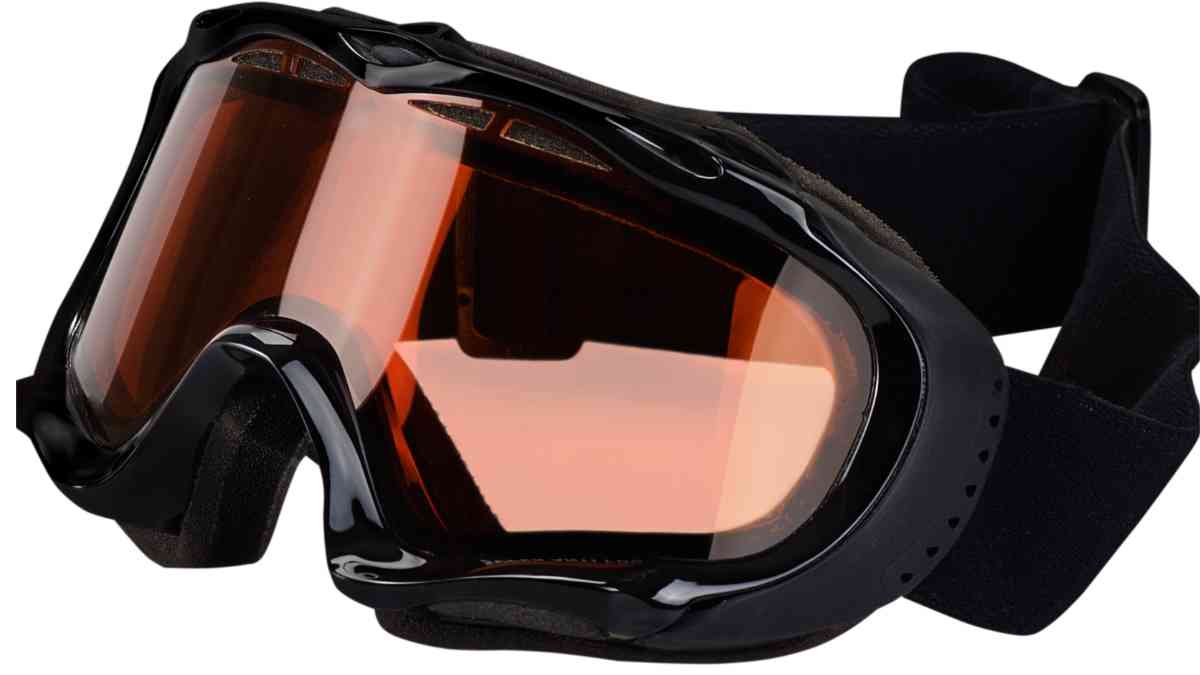Alpinism is a thrilling and challenging activity that attracts adventure enthusiasts from around the world. Whether you’re a seasoned mountaineer or a beginner exploring the wonders of high-altitude adventures, one common issue that can hinder your experience is goggle fogging.
In this article, we will dive deep into the causes of goggle fogging and provide you with a range of tips and techniques to ensure clear views throughout your alpinism journeys.
| Takeaways |
| Proper ventilation is crucial to prevent goggle fogging during alpinism adventures. |
| Anti-fog coatings on goggles help reduce moisture buildup and promote clear vision. |
| Choosing the right goggle design and adjusting the fit for airflow are effective preventive measures. |
| Additional measures such as avoiding overheating, keeping goggles dry, and using pre-warming techniques can further prevent fogging. |
| Exploring fan-assisted goggles can be beneficial for those experiencing severe fogging issues. |
| In case of fogging, take steps to assess the situation, dry the goggles, and ensure proper ventilation before continuing. |
| Further reading resources provide additional tips and techniques for preventing goggle fogging. |
| FAQs address common questions and provide insights on goggle fogging prevention. |
Understanding the Causes of Goggle Fogging
Goggle fogging occurs when moisture condenses on the inner surface of the lenses, obstructing your vision and making it difficult to navigate the mountains safely. It is vital to grasp the reasons behind this phenomenon to effectively prevent fogging.
One primary cause of goggle fogging is the temperature difference between the outside air and the environment confined within the goggles. As your body produces heat, it warms the air trapped inside the goggles. When this warm air comes into contact with the relatively cooler lens surface, condensation forms, causing fogging. Additionally, perspiration and increased humidity levels within the goggles can exacerbate the problem.
If you’re new to ice climbing, this guide offers insights into the best spots in the USA. Discover safe and thrilling experiences for novice climbers.
Tips for Preventing Goggle Fogging
Now that we understand the causes, let’s explore some proven tips to prevent goggle fogging during your alpinism expeditions.

1. Proper Ventilation
Adequate ventilation is crucial to allow air circulation within the goggles. Look for goggles that feature multiple vents strategically placed to allow airflow while effectively preventing snow, wind, and debris from entering. This ventilation system helps regulate the temperature and humidity levels inside the goggles, minimizing the chances of fogging.
2. Anti-Fog Coatings
Many modern alpinism goggles come equipped with anti-fog coatings on their lenses. These coatings work by reducing moisture buildup and promoting even distribution of temperature across the lens surface. When purchasing goggles, opt for models that explicitly mention anti-fog coatings to enhance your clarity and visibility in challenging conditions.
Explore the world of ice climbing with “The Ultimate Guide to Ice Climbing in the USA.” This comprehensive resource covers techniques, tips, and must-visit locations for climbers.
3. Choose the Right Goggle Design
The goggle design plays a crucial role in preventing fogging. Look for models that prioritize airflow and ventilation, such as those with frameless designs or those featuring large peripheral vents. The design should allow hot air to escape easily while preventing cold air from entering rapidly.
4. Adjust Fit for Airflow
Properly fitting goggles are essential to ensure optimal airflow, preventing fogging. Adjust the strap to achieve a snug fit without compressing your face too tightly. A well-fitted pair of goggles will allow air to circulate freely while minimizing the chances of fogging.
5. Use Helmet Vents
If you wear a helmet during your alpinism adventures, make sure it is equipped with ventilation vents. These vents work in conjunction with the vents on the goggles, allowing air to flow freely and reducing the risk of fogging.
As a beginner, you can kickstart your journey with “The Ultimate Speed Climbing Guide for Beginners.” This guide provides step-by-step advice to help you excel in speed climbing.
Additional Measures to Prevent Fogging

While the aforementioned tips are effective, there are further measures you can take to ensure clear views and prevent goggle fogging in extreme alpinism conditions.
1. Avoid Overheating
Overheating can contribute to increased moisture buildup within your goggles. To prevent this, dress in layers and choose clothing that allows proper body temperature regulation. Dressing too warmly can cause excessive perspiration, leading to fogging.
2. Keep Goggles Dry
Before heading out on your alpinism expedition, ensure that your goggles are completely dry. Moisture trapped inside the goggles can lead to fogging. If your goggles get wet during your adventure, use a microfiber cloth or towel to gently dry them off.
3. Use Anti-Fog Wipes or Sprays
Anti-fog wipes or sprays can be effective in combating fogging issues. These products create a thin film on the lens surface that helps prevent moisture buildup. Before using any anti-fog wipes or sprays, carefully follow the manufacturer’s instructions to ensure optimal results.
When tackling challenging ice climbs, it’s essential to explore the lesser-known gems. Discover the hidden treasures of ice climbing with our guide to the underrated ice climbing spots, and elevate your alpinism adventures.
4. Pre-Warm Goggles
Pre-warming your goggles before venturing into cold conditions can help prevent initial fogging. By bringing the goggles to room temperature or using your body heat, you reduce the temperature differential that often leads to fogging when you step outside.
5. Explore Fan-Assisted Goggles
For alpinists who frequently encounter severe fogging issues, fan-assisted goggles can be a game-changer. These goggles feature built-in fans that actively circulate air within the goggle chamber, preventing fogging. While bulkier than standard goggles, they offer unparalleled fog-free vision.
What to Do When Fogging Occurs
Even with the best preventive measures, fogging can still occur. If you find your goggles fogging up during your alpinism adventures, here are a few steps to rectify the situation:
- Stop and find a safe spot to assess the situation.
- Gently remove your goggles from your face.
- If possible, wipe away any moisture on the lens surface using a microfiber cloth or the provided goggle bag.
- Allow the goggles to air out for a few moments to dissipate the trapped moisture.
- Once the goggles are dry, reposition them on your face and adjust the fit for proper ventilation.
- Resume your alpinism activities, ensuring proper airflow within the goggles.
Remember, preventative measures are key to minimizing fogging, but it’s essential to be prepared for unexpected situations.
Conclusion
Clear vision is essential for a safe and enjoyable alpinism experience. By understanding the causes of goggle fogging and implementing the tips and techniques outlined in this article, you can ensure optimal clarity during your adventures. Remember to choose goggles with proper ventilation, anti-fog coatings, and suitable designs.
Adjust the fit to promote airflow, and consider additional measures such as using helmet vents, anti-fog wipes, pre-warming your goggles, or exploring fan-assisted options. With these strategies at your disposal, you can conquer any mountain with confidence, knowing your vision will remain clear all the way to the peak. Stay safe and enjoy your alpinism journeys!
Further Reading
Here are some additional resources to explore for more information on preventing goggle fogging:
- How to Prevent Ski Goggles Fogging: This comprehensive guide provides insights into the causes of goggle fogging and offers practical tips and techniques to keep your goggles fog-free during skiing and alpinism adventures.
- 5 Effective Ways to Stop Your Glasses and Goggles Fogging: This blog post discusses strategies to prevent fogging for both regular glasses wearers and those using goggles. Learn about different methods to combat fogging and ensure clear vision.
- How to Keep Goggles from Fogging Up: REI’s expert advice article covers various techniques to prevent fogging. From adjusting the fit of your goggles to using anti-fog products, this resource offers practical solutions for fog-free adventures.
FAQs
How does goggle fogging occur?
Goggle fogging occurs when warm, moist air inside the goggles comes into contact with the cooler lens surface, causing condensation and obstructing vision.
Can anti-fog coatings on goggles deteriorate over time?
Yes, over time, the effectiveness of anti-fog coatings on goggles can diminish. It is recommended to follow the manufacturer’s instructions regarding care and maintenance to optimize their anti-fog properties.
Are fan-assisted goggles suitable for all alpinism activities?
While fan-assisted goggles provide excellent fog prevention, they may be bulkier and heavier than standard goggles. For more intense activities, such as high-altitude mountaineering, they may be less practical due to added weight and potential power source limitations.
How often should I clean my goggles?
Regular cleaning is essential to maintain optimal clarity. It is recommended to clean your goggles after each use, following the manufacturer’s guidelines, to remove dirt, sweat, and any residue that could potentially contribute to fogging.
Can I use anti-fog sprays or wipes on goggles without anti-fog coatings?
Yes, anti-fog sprays or wipes can be used on goggles without anti-fog coatings. These products create a temporary barrier to reduce fogging. However, the effects may not be as long-lasting as with goggles that have built-in anti-fog coatings.

Welcome to my blog! I’m Hellen James, and I’m incredibly passionate about rock climbing, bouldering, ice climbing, and mountaineering. Join me as I embark on thrilling adventures, conquer vertical challenges, and share my experiences and insights with fellow outdoor enthusiasts.


